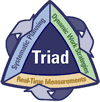
| Site Name | Naval Weapons Station Seal Beach, Detachment Concord |
| Location | Concord, CA |
| Site Type |
Munitions Manufacturing/Storage |
| Project Lead Type |
U.S. Navy Lead |
| Reuse Objective Identified |
Yes |
Building IA-25 was constructed in the mid-1940s to handle re-working of the Mark VIII Depth Charges and remodeled between 1970 and 1990 to handle explosives. The building was investigated under the Comprehensive Environmental Response, Compensation, and Liability Act (CERCLA) process, and a feasibility study (FS) was put on hold pending groundwater sampling and investigation of the leach field system. After a Solid Waste Management Unit (SWMU) investigation of the septic system, solvents were detected in the sludge material. Subsequently, a monitoring well was installed to determine if solvents had migrated into the groundwater. The traditional approach assumed the leach field was the only source of dissolved phase trichloroethene (TCE) in groundwater. The revised conceptual site model (CSM) showed that TCE contamination was primarily from surface disposal activities around the building.
The strategic objective for this project was to determine the nature and extent of solvent contamination in soil, soil gas, and groundwater for a remedial investigation (RI).
During the course of this investigation using a Triad-based, high-resolution approach, the planning team quickly eliminated non-VOC contaminants of concern. The Triad CSM revealed the solvent contamination was primarily from surface disposal activities around the building area, rather than disposal through the septic system and release to the environment via the leach field, as assumed based on the conventional approach. Using the Triad Approach, the planning team had data available in time to optimize laboratory analyses and to choose monitoring well, soil, and soil gas sample locations that cost-effectively managed and reduced uncertainty about site characterization and risk assessment decisions.
Under the conventional sampling approach, soil, soil gas, and groundwater samples would have been analyzed for a full suite of chemicals, resulting in unnecessary analytical expenses. Source area soil and groundwater samples were initially analyzed for a comprehensive list of compounds. After the first phase of sampling, compounds that were not detected were excluded from further sampling and analysis. Without the use of Site Characterization and Analysis Penetrometer System (SCAPS) Cone Penetrometer Test / Membrane Interface Probe (CPT/MIP), monitoring wells would have been installed 'blind' without knowledge of solvent-impacted hydrogeologic units and detailed stratigraphic data for optimal well screen placement. Substantial cost savings were recognized by first developing the hydrogeologic CSM through the use of CPT/MIP coupled with direct sampling ion trap mass spectrometry (DSITMS). If the conventional approach of installing step-out monitoring wells was used, the site would have remained uncharacterized because the wells would not have revealed the full extent of the complex, multifaceted plume. The high-resolution data provided by the CPT/MIP results revealed that the VOCs followed preferential stratigraphic pathways and migrated deeper in the aquifer than previously expected. Through the use of SCAPS with CPT/MIP, there was an overall reduction in the number of soil and soil gas samples and monitoring well installations than would have been required by the conventional approach.
The investigation used a team approach to reviewing historical information, developing an initial CSM and planning the project. The planning team's discussions led to the development of a RI Work Plan and UFP-QAPP (Uniform Federal Policy ? Quality Assurance Project Plan) that promoted collaborative decision-making between the Navy, regulators, and the field team to adapt sampling locations in response to real-time data and the emerging CSM.
Triad field team meetings were held with all stakeholders at several key decision points during the investigation. Using a high-resolution approach, the Triad team decided step-out locations, monitoring well placement, and soil gas sample collection depths based on real-time, high density field data with complete Triad team concurrence.
Both fixed-base laboratory and in-situ analytical techniques were used to support decision-making during a rapidly phased field investigation. Real-time technologies used in this project included SCAPS CPT/MIP coupled with a DSITMS. These technologies were used (1) to identify the subsurface lithology and potential preferential pathways and (2) to characterize VOCs in both the vadose and saturated zone down to 115 feet below ground surface. The MIP/DSITMS provided a high density data set indicating the presence or absence of individual VOC compounds. TCE and DCE were the most commonly identified VOCs. Semi-quantitative to qualitative VOC MIP responses ranging from less than 500 parts per billion to 600,000 parts per billion were observed using MIP/DSITMS and facilitated complete site characterization. SCAPS logs were generated in the field with real-time data and distributed to the Triad team to support decisions and revise the CSM.
To update this profile, contact Cheryl T. Johnson at Johnson.Cheryl@epa.gov or (703) 603-9045.